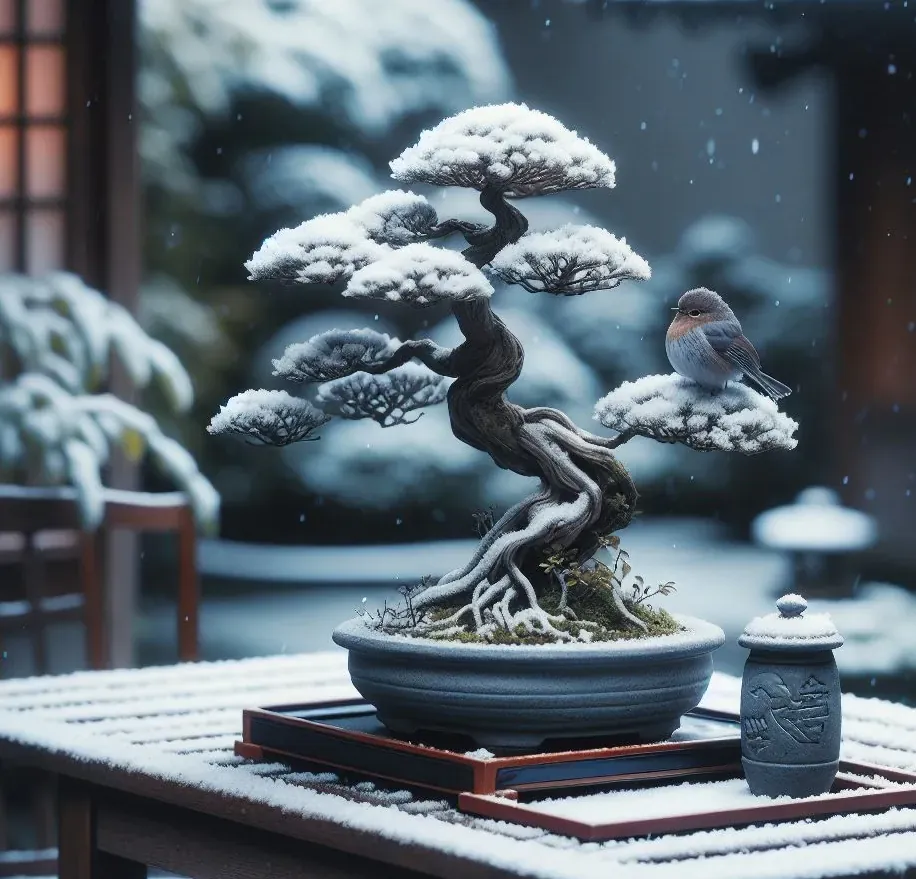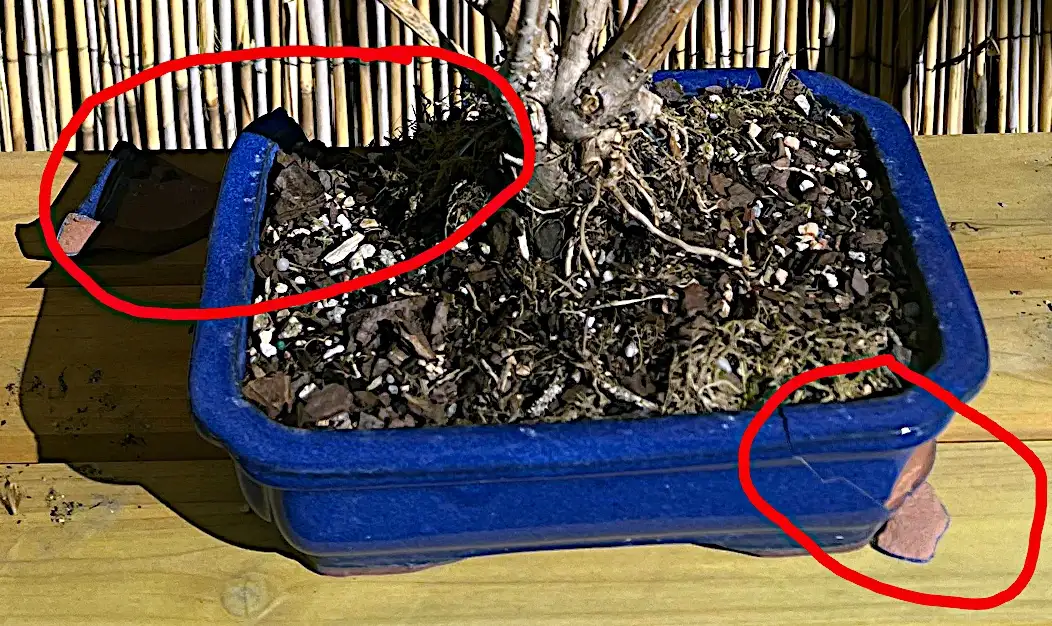Overwintering Your Bonsai or "What do I do with my bonsai in the winter?"

A common concern of bonsai hobbyists is what to do with their outdoor bonsai trees in areas with freezing temperatures in the winter months. Deciduous bonsai tree species need this winter dormancy so it is best to leave them outside to experience the seasonal cold. However, unlike trees planted in the ground, bonsai trees are in containers. Being in containers their roots are less insulated and could freeze. If this occurs the tree could die. To protect their bonsai trees experienced bonsai enthusiasts use overwintering techniques to bring their trees through the winter healthy and ready for spring.
Overwintering techniques
The following sections describe a couple common overwintering techniques.
Let your bonsai become one with the earth
One of the most preferred overwintering techniques is placing the bonsai, pot and all, inside a hole. The surrounding soil insulates the pot and the roots within from temperature extremes. First, choose a location sheltered from wind. Optimum placement would be a location sheltered from wind and under the cover of a larger tree. Next, dig a hole deep enough so that the pot, when placed inside, will be slightly lower than the soil line. After, place a humidity tray upside down into the bottom of the hole. Place the bonsai tree on top the ledge created by the tray.
Once completed, wet pine bark mulch should be filled in around the sides of the pot inside the hole. After, a top layer of pine bark mulch should be placed on the surface of the bonsai pot's soil to make it even with the surrounding soil line. The pine bark serves a few purposes; it insulates, keeps the tree watered, and makes it easier to take out of the ground later. Lastly, a plastic sheet can be placed over the bonsai as further protection if freezing precipitation is forecast.
- Find a covered, wind-protected location
- Dig a hole, just deeper than bonsai pot
- Place bonsai with pot in hole on top of overturned humidity tray
- Place wet pine bark around sides of pot
- Top dress with pine park to even surface to ground
Keeping the tree from drying out is crucial which is why protecting from wind and using mulch to keep moisture locked in is so important. Pay attention to the soil, the mulch reduces the need for watering, but watering may still be needed when things aren't frozen and there has been a lack of rain.
Can your pot handle freezing temperatures?
As mentioned in the bonsai pots article, some pots may crack in freezing temperatures. These are usually less expensive clay terra cotta pots that are low fired. They tend to absorb water which can be great for higher temperature locations, but that water can freeze causing the pot to crack in locations that experience freezing winters.
When looking for stoneware bonsai pots that will do better in freeze-thaw cycles look for terms like
- High fired
- Vitrified
Alternately, one could use plastic or mica which is a kind of rock rather than clay and are less likely to crack.
 Clay bonsai pot broken by freeze thaw cycle
Clay bonsai pot broken by freeze thaw cycle The unheated room
The other option is to place the tree in an unheated room such as a shed, garage, or unheated greenhouse where the temperature won't rise above 50 degrees Fahrenheit. If the temperature rises too much the tree may come out of winter dormancy too early. If this method is used, it helps the roots to keep the soil more dry than wet, but not completely dried out (see watering article). Additionally, inspect the tree to make sure there are no lingering insects that may try to make a meal of your tree.
